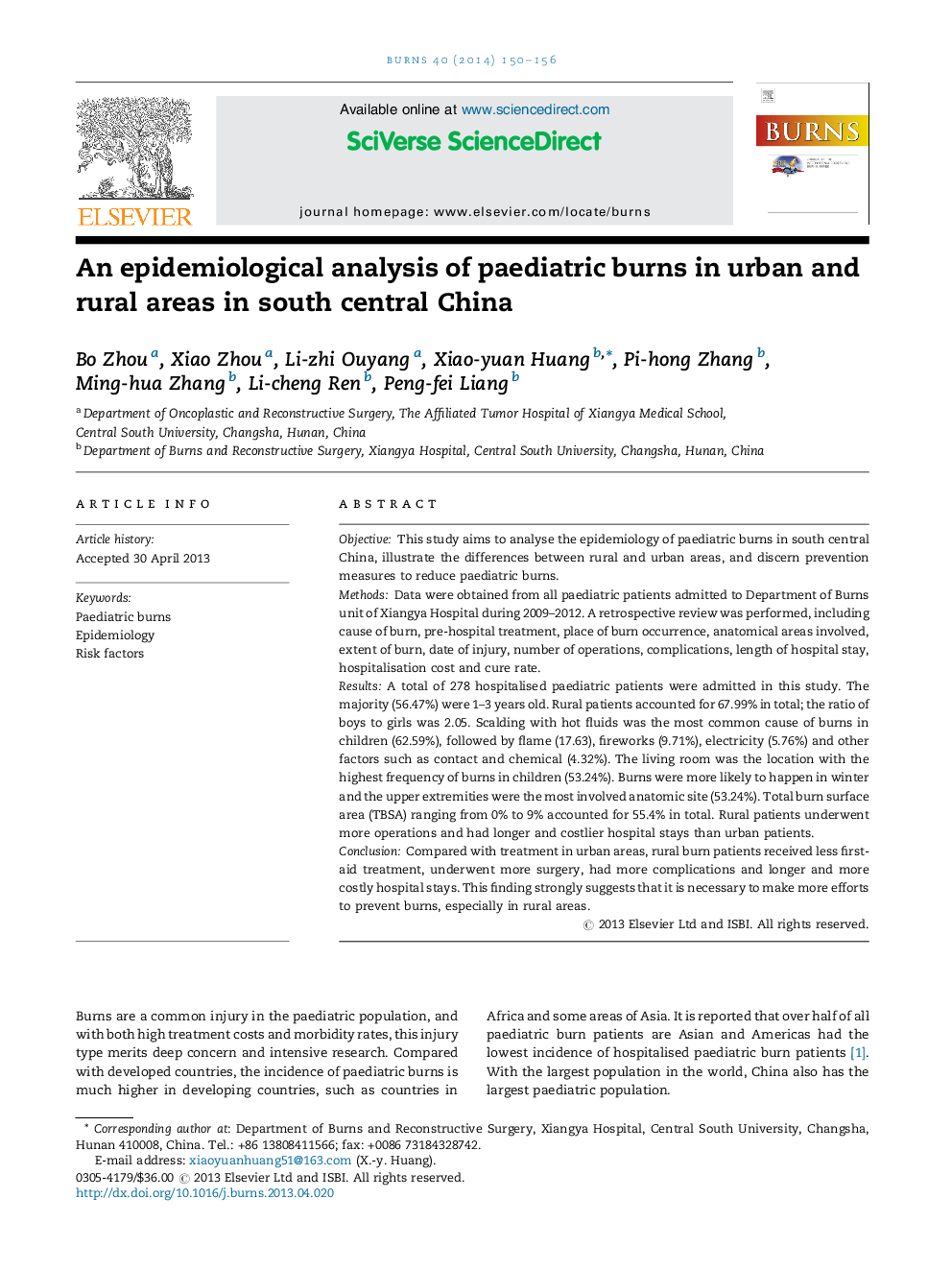| Article ID | Journal | Published Year | Pages | File Type |
|---|---|---|---|---|
| 3104631 | Burns | 2014 | 7 Pages |
ObjectiveThis study aims to analyse the epidemiology of paediatric burns in south central China, illustrate the differences between rural and urban areas, and discern prevention measures to reduce paediatric burns.MethodsData were obtained from all paediatric patients admitted to Department of Burns unit of Xiangya Hospital during 2009–2012. A retrospective review was performed, including cause of burn, pre-hospital treatment, place of burn occurrence, anatomical areas involved, extent of burn, date of injury, number of operations, complications, length of hospital stay, hospitalisation cost and cure rate.ResultsA total of 278 hospitalised paediatric patients were admitted in this study. The majority (56.47%) were 1–3 years old. Rural patients accounted for 67.99% in total; the ratio of boys to girls was 2.05. Scalding with hot fluids was the most common cause of burns in children (62.59%), followed by flame (17.63), fireworks (9.71%), electricity (5.76%) and other factors such as contact and chemical (4.32%). The living room was the location with the highest frequency of burns in children (53.24%). Burns were more likely to happen in winter and the upper extremities were the most involved anatomic site (53.24%). Total burn surface area (TBSA) ranging from 0% to 9% accounted for 55.4% in total. Rural patients underwent more operations and had longer and costlier hospital stays than urban patients.ConclusionCompared with treatment in urban areas, rural burn patients received less first-aid treatment, underwent more surgery, had more complications and longer and more costly hospital stays. This finding strongly suggests that it is necessary to make more efforts to prevent burns, especially in rural areas.
